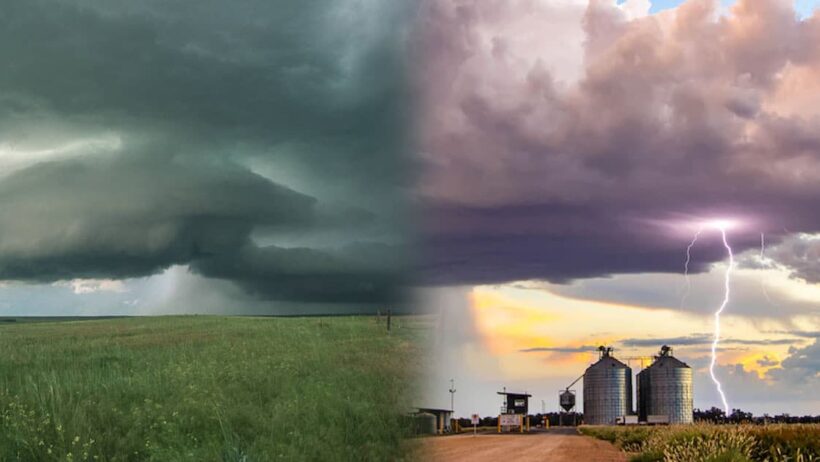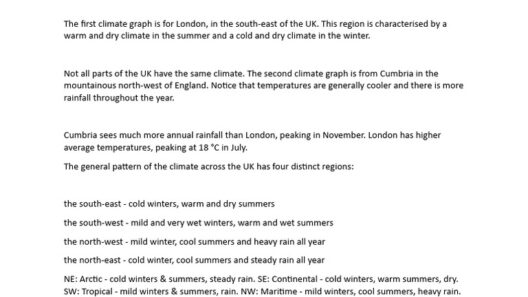Climate, a term often used interchangeably with weather, encompasses an intricate tapestry of atmospheric conditions that prevail over extended periods—typically 30 years or more—within a specific region. This definition, albeit straightforward, belies the complexity of climate and its profound implications on the planet’s ecosystems and human societies. As we delve into the nuances of climate and its interplay with meteorological phenomena, we cultivate a deeper understanding of our environment and strengthen our resolve to address the pressing challenges posed by climate change.
To dissect the concept of climate, it is crucial to differentiate between weather and climate. Weather refers to the short-term conditions of the atmosphere at a particular time and place—think of the sunny skies or tempestuous storms that define our daily experiences. In contrast, climate encapsulates the average of these weather conditions over extensive periods, thus providing a macro perspective that reveals trends and patterns omnipresent beneath the variability of daily weather. This distinction is paramount; understanding climate allows for projections regarding future atmospheric behavior and informs us about potential shifts in ecosystem dynamics.
The classification of climate zones—such as tropical, arid, temperate, polar, and others—further elucidates the diversity of climatic conditions experienced across the globe. These categories are derived from several factors, including latitude, altitude, and geographical features like mountains and oceans. For instance, equatorial regions typically experience warm temperatures and substantial precipitation, fostering lush rainforests, whereas polar regions are defined by their chilling cold and minimal vegetation. This regional differentiation does not merely present an interesting classification; it serves as a foundational element in understanding biodiversity, agricultural practices, and even cultural development across various human societies.
Climate is governed by a confluence of elements. Among the most significant are temperature, precipitation, humidity, wind patterns, and atmospheric pressure. These elements operate in concert to create distinct climatic conditions. For example, the Earth’s tilt and orbit around the sun dictate seasonal variations—effects often experienced dramatically in temperate zones, where winters can be frigid and summers sweltering. In contrast, tropical regions experience little variation in temperature throughout the year, yet they are subjected to irregular precipitation patterns that can lead to flooding or droughts, depending on seasonal monsoons.
The concept of climate variability further enriches our understanding of this subject. Climate variability refers to the natural fluctuations in climate patterns that occur over time—from decadal oscillations such as El Niño and La Niña, which can drastically alter weather patterns in various regions, to longer-term changes influenced by solar activity or volcanic eruptions. These natural variations can have significant ramifications on agriculture, water supply, and the overall resiliency of ecosystems.
However, what distinguishes the current discourse on climate from historical paradigms of meteorological science is the undeniable influence of climate change. Anthropogenic activities—ranging from industrial emissions to deforestation—have been altering the planet’s climate at an unprecedented rate. The consequences of such alterations are manifold, including rising global temperatures, shifting precipitation patterns, extreme weather events, and a consequential loss of biodiversity. Understanding climate change is imperative—not just as a scientific phenomenon but as a societal challenge that necessitates immediate attention and action.
One critical aspect to consider is the greenhouse effect. This natural process involves the trapping of the sun’s warmth in the Earth’s atmosphere, primarily through gases like carbon dioxide, methane, and water vapor. While the greenhouse effect is essential for maintaining temperatures conducive to life, human activity has intensified this effect by augmenting the concentrations of greenhouse gases. This enhancement leads to global warming, which in turn exacerbates climate variability and instigates extreme weather patterns.
Climate models play a pivotal role in our understanding of these phenomena. Through mathematical representations of atmospheric processes, climate models allow scientists to simulate future climatic conditions under various scenarios. These models help project potential outcomes based on different levels of greenhouse gas emissions and inform policymakers about the necessity for sustainable practices.
As we grasp the intricacies of climate and the implications of its variability, it becomes evident that understanding our planet’s weather patterns transcends intellectual curiosity—it compels us toward a more responsible stewardship of the Earth. The revelation that human actions are inextricably linked to climate outcomes creates a sense of urgency and fosters a collective responsibility that must be embraced.
Individuals and communities alike can engage in positive environmental practices, advocating for renewable energy sources, promoting sustainable agriculture, and supporting conservation efforts. By shifting our perspective and recognizing the interconnectedness of our actions, we can contribute to mitigating the adverse effects of climate change and fostering resilience in the face of environmental challenges.
In conclusion, comprehending what climate signifies and its role in shaping our planet’s weather patterns is vital for informed action and advocacy. Climate is not merely a scientific concept; it is an everyday reality that affects ecosystems, economies, and our very way of life. Armed with knowledge, we possess the intrinsic capability to initiate change, safeguard the environment, and secure a more sustainable future for generations to come. The quest for understanding climate thus serves as a catalyst for innovative solutions and a collaborative effort toward a stable environmental legacy.








